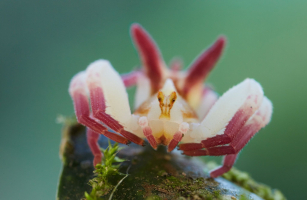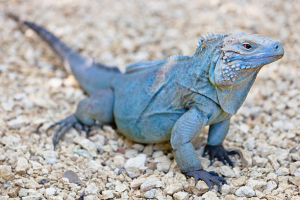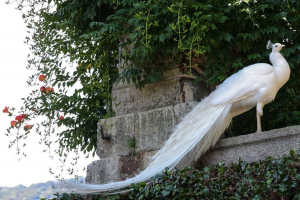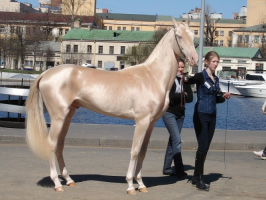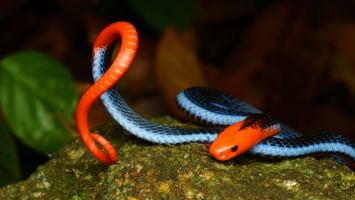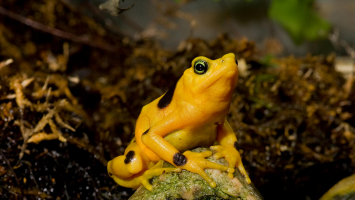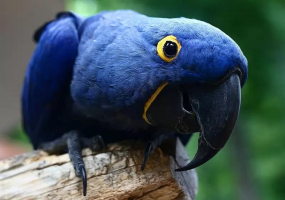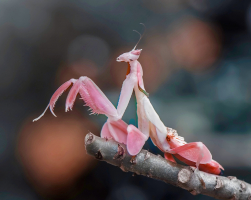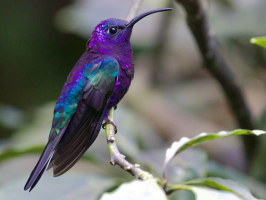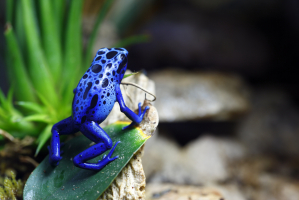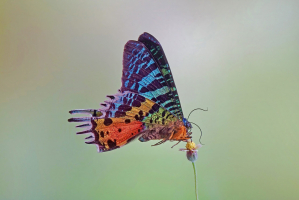Top 10 World's Most Beautiful Eagle Species
Are you curious about the world's most beautiful eagle species? Eagles are seen as majestic animals representing courage, power, and pride. With their ... read more...strength, incredible hunting prowess, and enormous wings, they have been an inspiration to mankind for millennia. They are enormous raptors that will never give in to their prey's size or strength. For their prey or to reclaim their territory, eagles will fight no matter what. They have traditionally been linked to honor, bravery, and beauty. Below is a list of the most beautiful eagle species in the world; let's find out!
-
The Philippine Eagle (Pithecophaga jefferyi), also known as the Monkey-Eating Eagle, is a majestic and critically endangered species that holds great significance for the Philippines.
The Philippine Eagle can grow as long as 86-102 cm and weighs around 4.7 to 8 kg. By length, it is among the largest eagles on the entire globe. It can be found in the Philippines' mountains and tropical woods, and it can live for more than 30 to 40 years on average. The philippine is acknowledged as the national bird of the Philippines.
This magnificent bird is white or brown in color, with blue eyes, a big beak, and feathers on the end. It has a white belly, feet that are yellow, and dominant claws. With a crest of long feathers, it is clearly distinguishable. In addition, it is a carnivore that eats tiny birds, bats, squirrels, and monkeys.
Unfortunately, the survival of this magnificent bird is under threat due to ongoing habitat loss, which has led to its classification as severely endangered by the International Union for Conservation of Nature (IUCN). Conservation efforts are crucial to preserving this iconic species and its vital role in the ecosystem.
Watch Philippine Eagle - Video by Nat Geo WILD 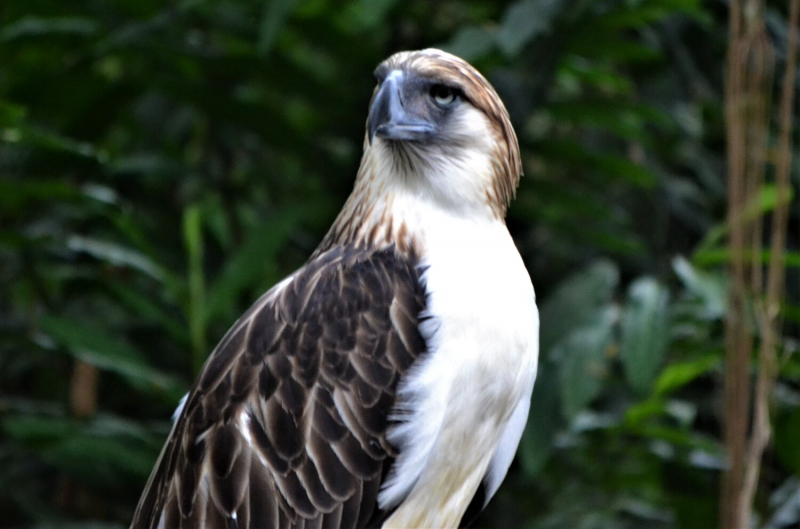
Gaia Discovery -
The Harpy Eagle (Harpia harpyja) is a captivating and powerful predator known for its impressive size and distinctive appearance. Harpy Eagle can grow as long as 40 inches and male eagle weighs 4-6 kg and female weigh 6-9 kg. It has a lifespan of 25–35 years and can be found in the jungles of Southern Mexico, South America, and East Central Brazil. Destruction of its natural habitat has caused it to vanish from many parts of its former range, and it is nearly extirpated from much of Central America. It is Panama's national bird.
This renowned eagle is often black, gray, and white, with gray feathers covering its head. In the wild, the Harpy Eagle's striking black, gray, and white plumage serves as excellent camouflage, helping it blend seamlessly into the forest canopy as it patiently awaits its prey. It is an aggressive bird with a daring beak, sharp feet, and claws to hurt its victim. Additionally, it has a fluttering speed of 50 mph.
Its diet consists primarily of other birds but also includes opossums, sloths, and monkeys, showcasing its role as one of the top predators in its ecosystem. As one of the largest birds of prey in the world, the Harpy Eagle commands respect and awe, making it a truly remarkable and essential species to protect and conserve for future generations.
Watch Harpy Eagle - Video by BBC Earth 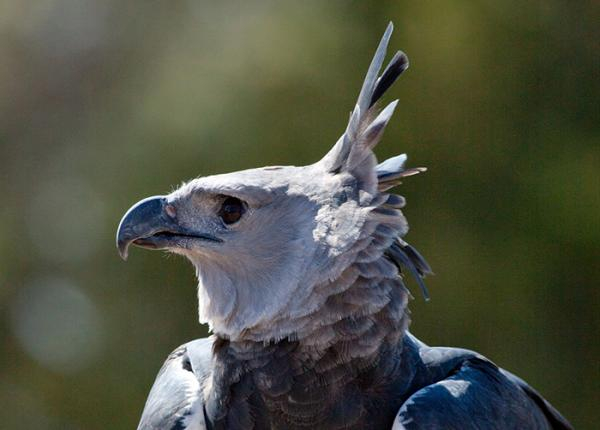
The Peregrine Fund -
The Wedge-Tailed Eagle (Aquila audax) is an iconic and majestic raptor that holds a significant place in Australia's natural heritage. As the largest bird of prey on the continent, it commands awe and admiration from all who encounter it. It has a lifespan of 11 to 40 years and can be found in grasslands, savannas, forests, highlands, and woodlands in Australia and New Guinea.
The distinctive appearance of the Wedge-Tailed Eagle sets it apart from other avian species. Its bronze-white feathers, creamy white beak, and striking blackish-brown body give it a regal and commanding presence. What truly makes this eagle easily recognizable are its powerful legs, which are covered in feathers, and its distinctive wedge-shaped tail.
Being a carnivore, it eats kangaroos, koalas, birds, lizards, rabbits, and hares. This bird has the ability to fly continuously at 50 mph for 90 minutes. This species generally constructs a large stick nest in an ample tree, normally the largest in a stand, and lays typically two, although sometimes 1 to 4, eggs. Usually, breeding efforts manage to produce one or two fledglings, which after a few months more tend to disperse widely.
With its majestic presence, impressive flight capabilities, and crucial role in the Australian ecosystem, the Wedge-Tailed Eagle remains an emblematic and treasured symbol of Australia's natural heritage.
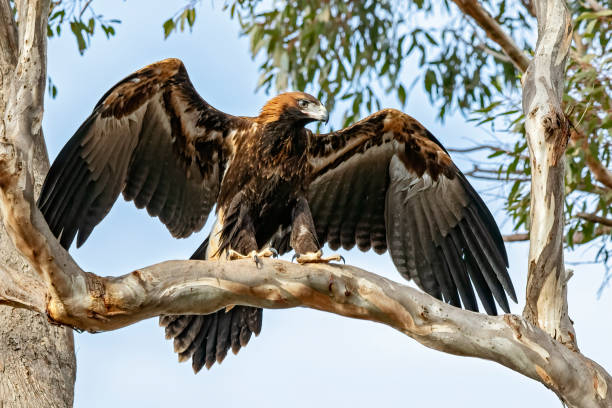
iStock Watch Wedge Tailed Eagle - Video by Skypig999 -
Steller's Sea Eagle (Haliaeetus pelagicus), also known as the Pacific sea eagle or white-shouldered eagle, is a large diurnal bird of prey in the family Accipitridae. It is the most noticeable eagle and may be seen on rivers and seashores in China, Russia, and Korea. Its stunning dark-colored body makes it simple to identify. In addition, it has a white forehead, a wedge-shaped tail, and a yellow beak. The lifespan of a Steller's sea eagle is 20 to 25 years, and it measures 85 to 105 cm long and weighs 5-9.5 kg. Steller's sea eagle females are bigger than males.
It is a carnivorous bird that eats crabs, carrion, gulls, small mammals, and fish or other aquatic life. It is also listed as one of the amazing black birds with yellow beaks. Steller's sea eagle is listed as vulnerable on the International Union for Conservation of Nature's Red List of threatened species.
One interesting aspect of its behavior is its cooperative breeding nature. Unlike many other eagle species, Steller's Sea Eagles often form monogamous pairs that work together to raise their offspring. Both males and females actively build and maintain the nest, incubate the eggs, and provide food for the chicks.
Steller's Sea Eagles have incredible eyesight, which plays a crucial role in their hunting strategies. With eyesight that is estimated to be about 3.6 times more powerful than that of humans, these eagles can spot their prey from great distances, even in low-light conditions. Their keen vision allows them to spot potential food sources, such as fish swimming beneath the water's surface or small mammals scurrying on the shore. This exceptional visual acuity makes Steller's Sea Eagles highly efficient predators in their coastal and riverine habitats.
Watch Steller’s Sea Eagle - Video by BBC Earth 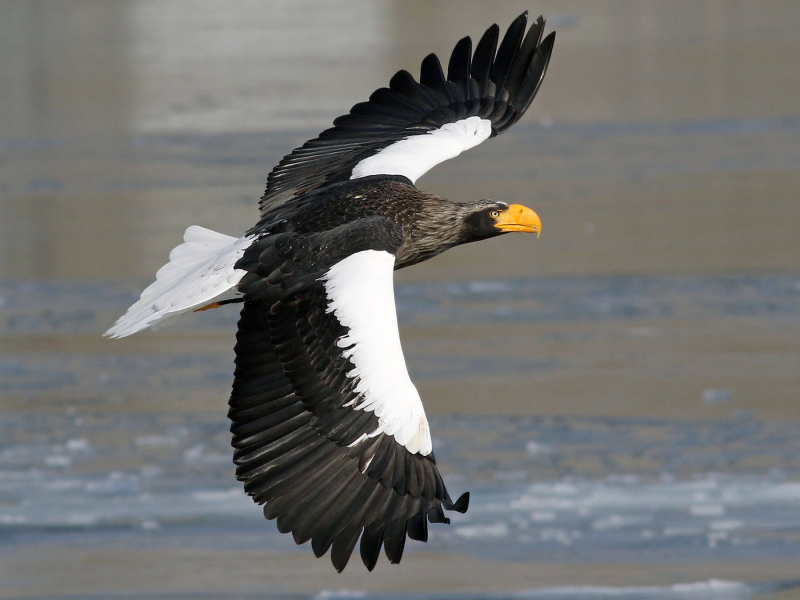
eBird -
The Golden Eagle is a North American Bird with a length of 33 to 38 inches and weighs 2.7 to 6.8 kg. It can live for around 30 years and is found in grasslands, highlands, and steppes in North America and Mexico. It has beautiful golden-brown feathers on its head and is dark brown in color. Its tail is also gray, and its inner wings are round and gray.
It has an 80 mph top speed. The carnivorous golden eagle consumes carrion, rabbits, marmots, birds, squirrels, fish, and a variety of other large invertebrates. Because of its hunting prowess, the golden eagle is regarded with great mystic reverence in some ancient tribal cultures. This bird is considered the national bird of Mexico and is cunning enough to kill a man.
The Golden Eagle (Aquila chrysaetos) is not only a powerful and revered predator but also a fascinating example of avian intelligence. Studies have shown that these birds possess remarkable problem-solving abilities and are capable of using tools to aid in their hunting. In some cases, they have been observed using sticks or other objects to dislodge prey from hard-to-reach places or to distract potential threats during their nesting period. This level of cognitive flexibility showcases the Golden Eagle's adaptability and resourcefulness in the wild.
In addition to their impressive hunting skills, Golden Eagles are known for their incredible aerial acrobatics. During their courtship displays, these eagles engage in breathtaking aerial routines, soar to great heights, lock talons, and then tumble and spiral towards the ground in a spectacular freefall, breaking apart just before they reach the earth. This breathtaking behavior is a mesmerizing sight and a crucial bonding ritual between mated pairs, strengthening their relationship for the successful breeding and raising of their offspring.Watch Golden Eagle - Video by BBC Earth 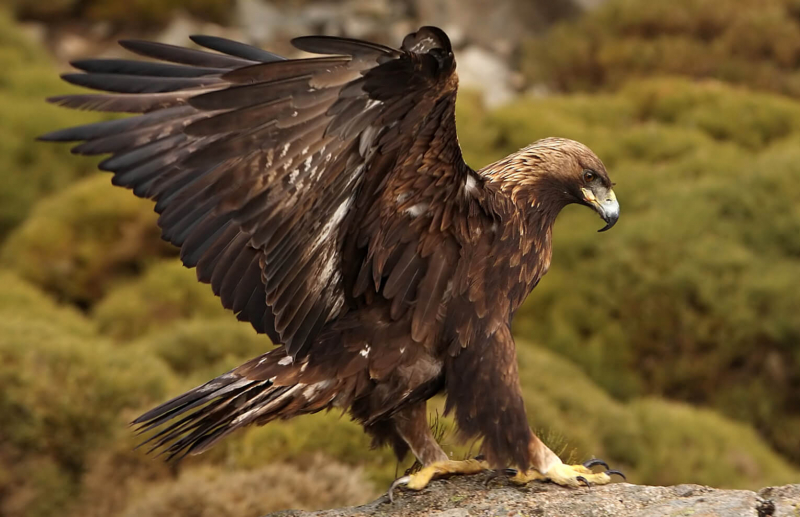
American Bird Conservancy -
American Bald Eagle, acknowledged as the national bird of the United States, can grow as long as 2.5-3 feet and ponders 3-6 kg. With a life expectancy of almost 20 years, it is one of the most beautiful, graceful, and brave birds and animals that may be found in the mountains, rivers, and coasts of the United States and Canada.
It has brilliance due to its dark brown body, white head, and wings. Because its white head seems bald when viewed from a distance, it is known as the "bald eagle." It adds splendor with its bright legs and bill. Typically, it eats fish, squirrels, and rabbits. The bald eagle is one of the scavenger birds in the world.
The American Bald Eagle, an emblem of strength and freedom, holds a fascinating ecological role in its habitat. As a top predator, its presence in an ecosystem is crucial for maintaining balance and providing valuable environmental indicators. Due to its position at the top of the food chain, the health, and well-being of the bald eagle can reflect the overall health of its surroundings.
As such, monitoring the population and behavior of these majestic birds can help researchers assess the impacts of pollution, habitat degradation, and other environmental factors on the broader ecosystem. Efforts to protect and conserve the bald eagle not only benefit this iconic species but also contribute to the preservation of entire ecosystems and the diverse array of life they support.
Watch American Bald Eagle - Video by Nat Geo WILD 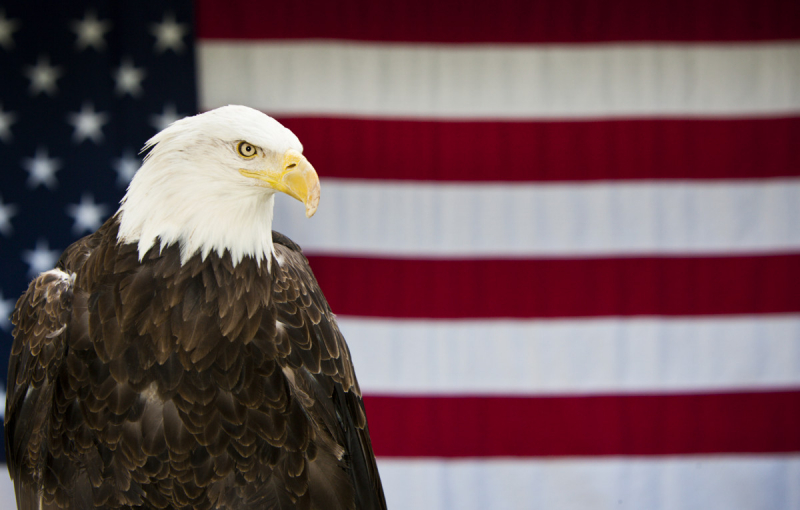
The Flag Shirt -
The Martial Eagle can rise as long as 78-96 cm and weighs 2.2 to 6.5 kg. It is regularly observed in Sub-Saharan Africa's broad savanna. This reclusive bird has a 14–25 year life expectancy. It has white feathers with blackish-brown patches, black, brown, or gray wings, and a dark brown body. It has enormous feet, black talons, and golden eyes. It is capable of a 142 mph flight.
This animal is a dominant carnivorous eagle that consumes other water birds, monkeys, lambs, goats, antelopes, and other livestock. It is one of few eagle species known to hunt primarily from a high soar by stooping on its quarry. This hunting technique allows it to surprise and overpower larger animals, such as monkeys, lambs, goats, and even antelopes, making it a formidable and skilled hunter in the savannas of Sub-Saharan Africa.The Martial Eagle (Polemaetus bellicosus) is known not only for its impressive size and striking appearance but also for its unique nesting behavior. Unlike many other eagles that build their nests high up in trees or on cliffs, the Martial Eagle constructs its nests on the ground. These large nests, often made of sticks and lined with soft materials, provide a secure environment for raising their young. However, this nesting behavior also makes their eggs and chicks vulnerable to predation by various ground-dwelling predators, leading to additional challenges in their already endangered status.
Due to ongoing habitat degradation and hunting, the IUCN has classed this dangerous eagle as critically endangered. Collaborative conservation initiatives that address issues like habitat degradation, illegal hunting, and human-wildlife conflicts are essential for ensuring the survival and recovery of the Martial Eagle population in the wild.
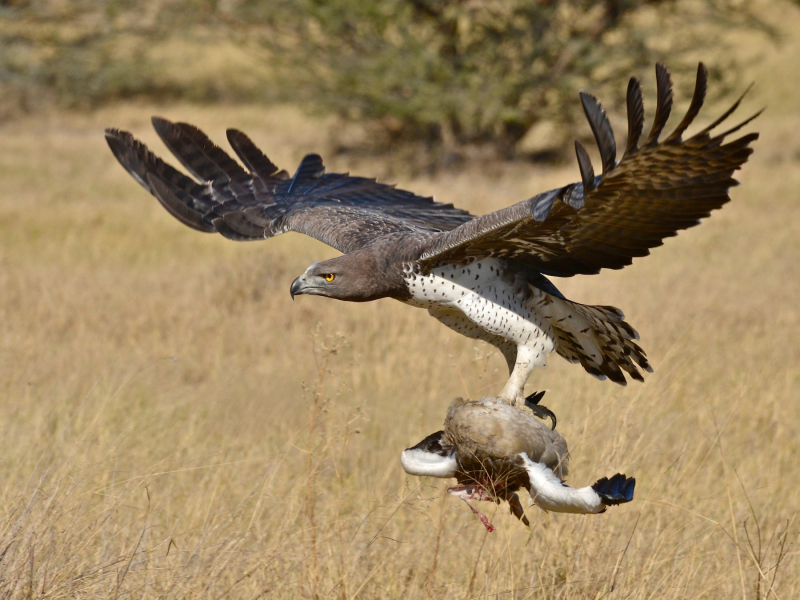
eBird Watch Martial Eagle - Video by Earth Touch -
The White-Tailed Eagle (Haliaeetus albicilla) is a very large species of sea eagle widely distributed across temperate Eurasia. They often spend most of the year close to large bodies of open water, such as rivers, lakes, wetlands, bogs, and coastal saltwater areas. For nesting, it needs old-growth trees or big sea cliffs, and it needs a lot of fish, birds (mostly water birds), and any other kind of available prey.
The general hue of an adult white-tailed eagle is greyish-mid brown. The majority of the body and wings have fairly uniform plumage, but the top wing coverts are frequently a little lighter. The mature bird's head, neck, and upper breast are noticeably paler than the rest of its plumage and are often buff in hue. These light regions can occasionally become considerably paler, up to virtually white, in aged or bleached plumage, giving these eagles the appearance of a washed-out bald eagle.
The White-Tailed Eagle holds a significant place in various cultures and folklore. In several European countries, this majestic bird symbolizes strength, power, and even royalty. It has been depicted on national emblems, coins, and historical coats of arms, representing the pride and heritage of the regions it inhabits. The White-Tailed Eagle's prominent presence in art, literature, and mythology further emphasizes its cultural importance and its enduring influence on human imagination throughout history.
Recent White-Tailed Eagle restoration and conservation efforts have been a success story. The species declined due to hunting and habitat destruction, disappearing from many of its original range. Some populations have recovered because to conservation efforts and legislative protections. In Europe, White-Tailed Eagle numbers have recovered after successful reintroduction initiatives. These conservation victories demonstrate the necessity of working together to save endangered species for future generations.
Watch White-Tailed Sea Eagle- Video by Nat Geo WILD 
BirdWatch Ireland -
The Crowned Eagle, also known as the African crowned eagle or the crowned hawk-eagle, is a large bird of prey found in sub-Saharan Africa; in Southern Africa, it is restricted to eastern areas. Its preferred habitats are principally riparian woodlands and various forests. The crowned eagle is the only extant member of the genus Stephanoaetus. A second species, the Malagasy crowned eagle (Stephanoaetus mahery), became extinct after humans settled on Madagascar.
The crowned eagle is a responsive, amazing, and horrifying bird with a brown, gray, or black upper body and a tail with black and brown tones. The Crowned Eagle's hunting prowess and remarkable abilities have earned it the nickname "Leopard of the Sky." It can hunt an animal seven times its size and has powerful legs with talons on each back toe. Its hunting techniques are characterized by stealth and surprise, as it silently swoops down from the canopy to ambush its unsuspecting prey. This striking combination of power and stealth has made the Crowned Eagle a symbol of respect and awe in various African cultures, often representing strength and bravery in traditional folklore and stories.
It is a carnivore with a life expectancy of 14–15 years and likes to eat the meat of creatures, including lizards, snakes, squirrels, cats, and hares. It is one of the most beautiful eagle species in the world.
Despite being one of the most magnificent and impressive eagle species, the Crowned Eagle faces various dangers to its survival in the wild. Deforestation destroys its preferred riparian woodlands and forests, reducing its hunting and breeding areas. Illegal wildlife trafficking, including pet trade and cattle hunting, also endangers the species. This lovely bird needs conservation to survive for future generations to admire in its native African surroundings.
Watch Crowned Eagle - Video by National Geographic 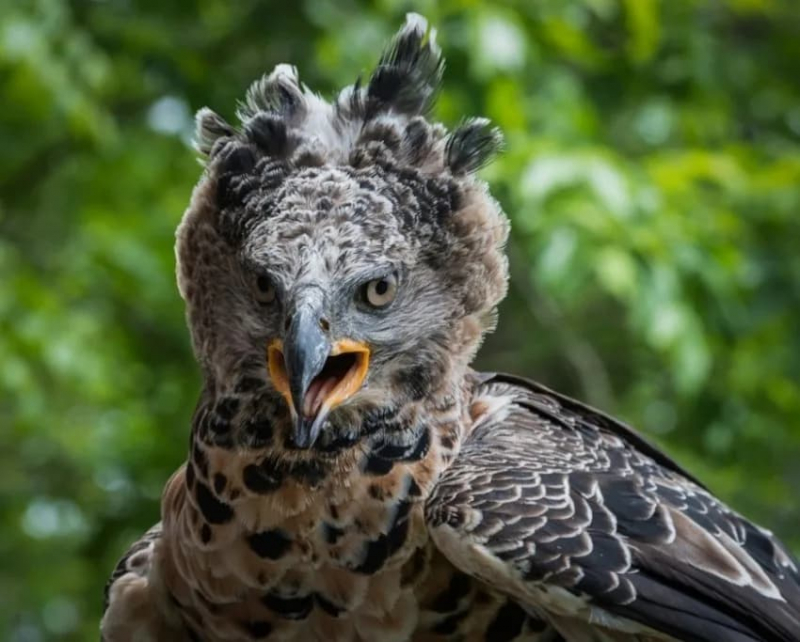
Our Endangered World -
The rufous-bellied eagle, also known as the Rufous-Bellied Hawk-Eagle (Lophotriorchis kienerii), is a species of raptor that inhabits tropical Asian forests. The pattern on adult rufous-bellied eagles is recognizable. They have a little crest on their black hood. White on the throat and breast contrasts with the chestnut underparts and wing coverts. Although the plumage of the sexes is nearly identical, females are somewhat larger and have more black on their faces. The wingtip almost touches the tail, and they perch in an extremely upright position. The tarsus has all of its feathers.
The underparts of juveniles are almost entirely white, with dark markings on the body's sides, the head mask, and the edges of the underwing coverts. The larger coverts are black, and the underwing lining is dark. The flight feathers have a black border and are sparsely barred. The tail has dark bars on it.The Rufous-Bellied Eagle is not only a striking species of raptor but also a bird with fascinating behaviors. During the breeding season, these eagles engage in breathtaking aerial courtship displays, soar, swoop, and dive together in a synchronized dance. These intricate displays strengthen the bond between mating pairs and serve as a means of communication and courtship rituals. During their displays, the agile and precise movements of these eagles showcase their impressive flying skills and add to the allure of observing them in their natural habitat. Such courtship rituals are not only a captivating sight for birdwatchers but also play a crucial role in the successful breeding and raising of their young, contributing to the continuity of this beautiful species in the tropical forests of Asia.
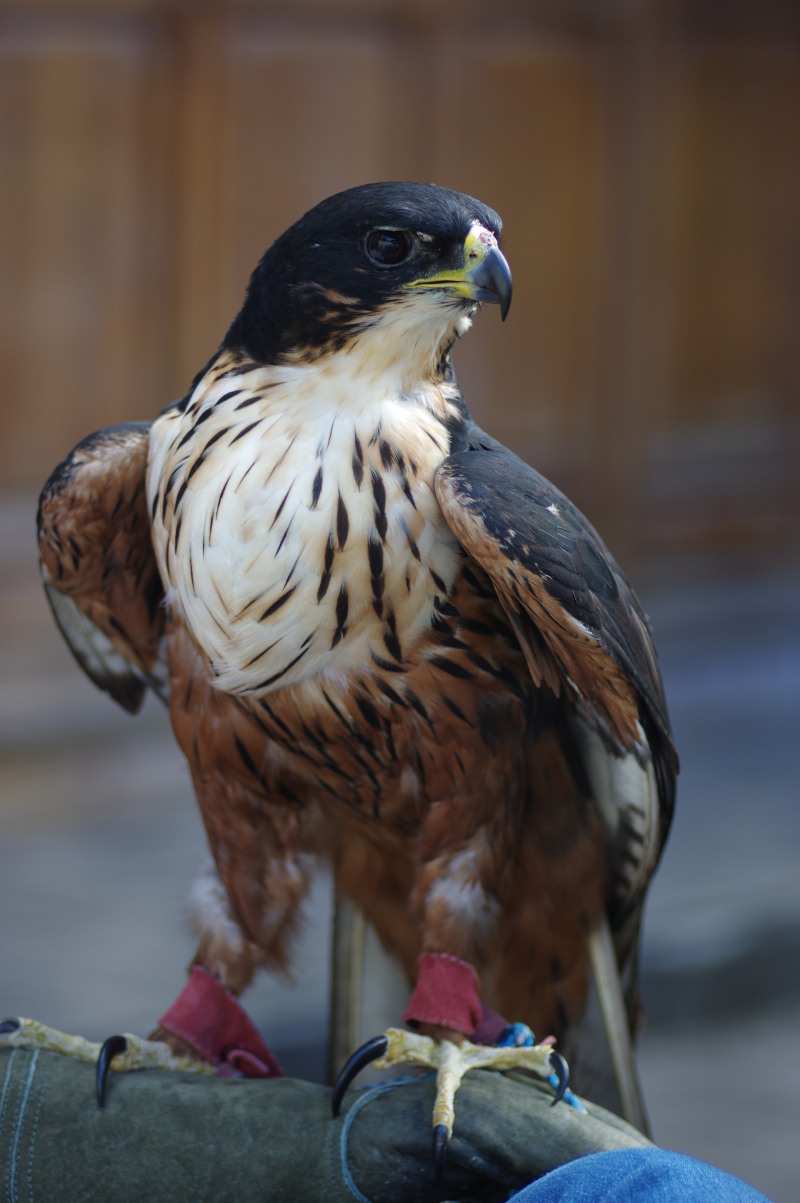
Rufous-Bellied Hawk-Eagle - Photo on Wikimedia Commons 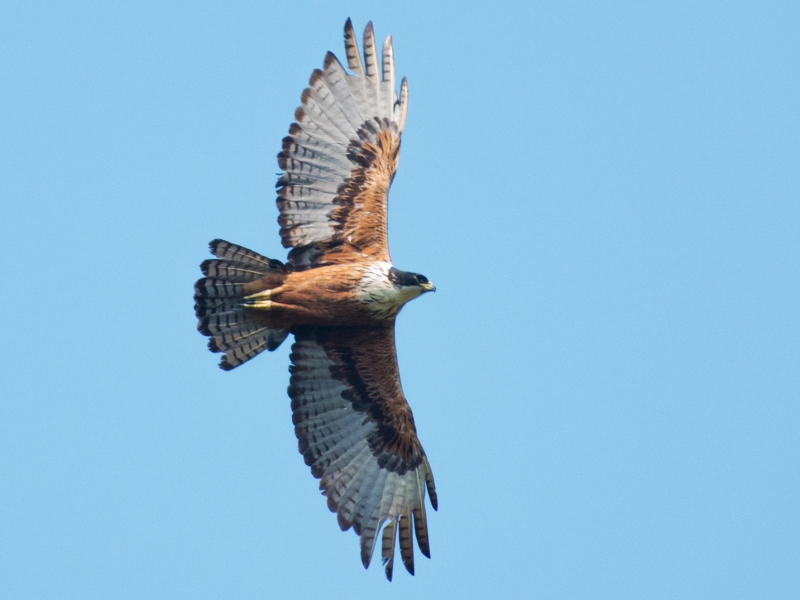
eBird













